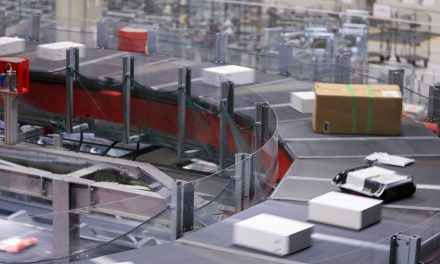
Estonian Post profits up despite 11% drop in letter volume
Estonian Post – Eesti Posti – has already made more profit in the first eight months of this year than it did for the whole of 2011. The company said yesterday it has generated EUR 1.8m in profit as of the end of August, passing the EUR 1.2m total profit reported for the 12 months of 2011.
The achievement comes despite an 11% decline in the postal operator’s domestic letter volumes, thanks to growth in parcel deliveries.
Estonian Post, which currently employs 2,579 people, saw its revenue growing by 9.8% in the first eight months of 2012, compared to the same period last year, to EUR 32.4m.
Domestic letter volumes might have continued to slip, but the company’s investment in digital communication systems helped its infologistics unit to double its revenues year-on-year, with sales of all postal services up 22.5% compared to the same period last year.
Growth also came from international mail and periodicals, but there was a 7.4% decrease in direct marketing revenues, with a particular slump in addressed advertising mail items.
Estonian Post achieved a 21.6% growth in its logistics services, thanks in part to the company’s investment in its parcel infrastructure, including its expanding network of 24-hour parcel locker terminals.
The Post’s financial service performance was down 29% year-on-year, but along with the ongoing decline in pension distribution activities in post offices, the result was lower in comparison to 2011 because in that year Estonia converted to the Euro.
“Quite satisfied”
Commenting on the results, Estonian Post supervisory board chairman Meelis Atonen said he was “quite satisfied” with the performance so far this year.
“Growth in the turnover of infologistics services shows that Eesti Post has adjusted incredibly well with the inevitable decline in the number of letters delivered on paper during the e-era,” said Atonen.
Aavo Kärmas (pictured above right), chairman of the board of directors, said he believed the company was moving in the right direction towards its long-term goals.
“Regardless of falling letter service volumes, we can grow our revenues in the sphere of logistics and infologistics,” he said.
Kärmas said he was pleased with the consistent growth being achieved by the company’s digital communications services, the Mail Centre and E-Invoicing Centre, and predicted a rapid change in the mail business as the communication sector expands into new channels.
“This is our opportunity,” he suggested.
Parcels
Meanwhile, the rapid growth in ecommerce and accompanying uptick in parcel volumes is also important to Estonian Post, although Kärmas pointed to the high level of competition in the home delivery market, which makes the development and improvement of service quality and coverage particularly important.
The growing network of parcel terminals is a key part of Estonian Post’s plans to win market share in parcel delivery in its home market and other Baltic republics.
“Last year, we launched 38 parcel lockers, a solution unique in the world, which links parcel lockers, post offices and courier services under the Post24 trademark in Estonia,” said Kärmas.
“As the needs and requirements of our clients become more and more linked to a complete logistics solution covering the whole Baltic states, we began developing the Post24 network in Lithuania in 2011. We intend to start with the establishment of the network in Latvia in the near future,” he added.
Estonian Post currently has 35 parcel locker terminals in Lithuania, along with its 38 in Estonia and 355 post offices.












